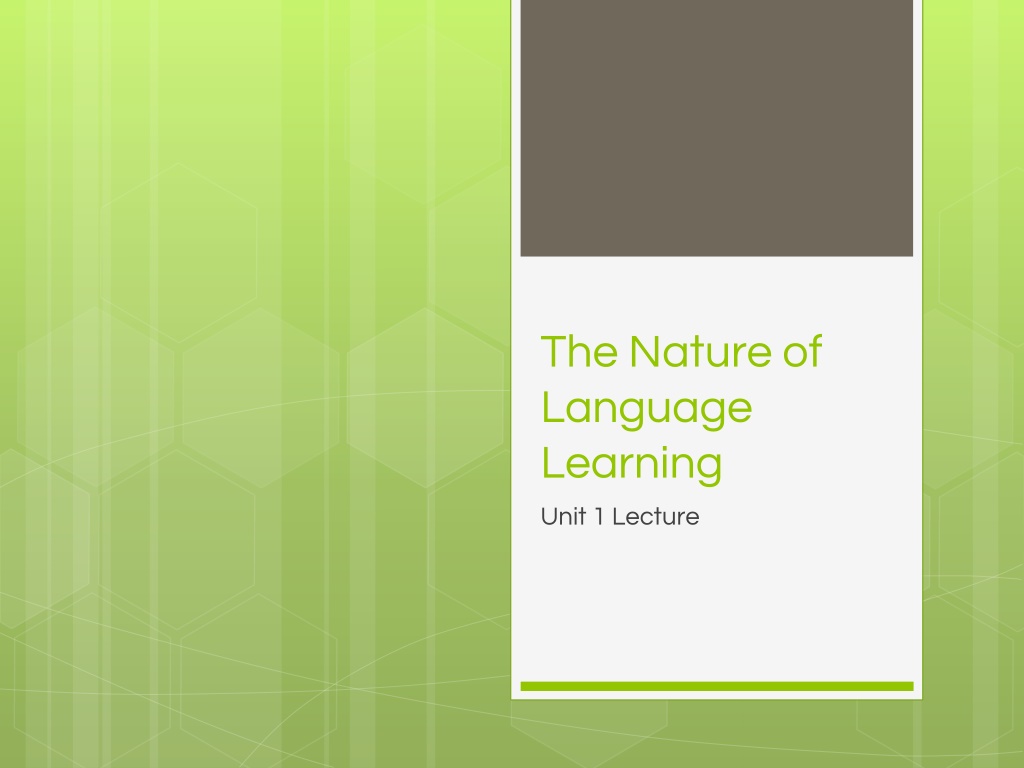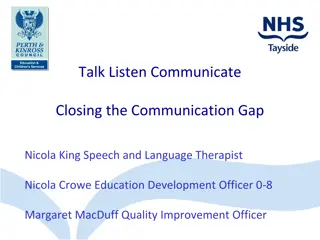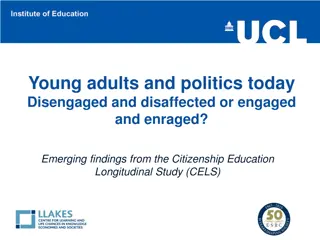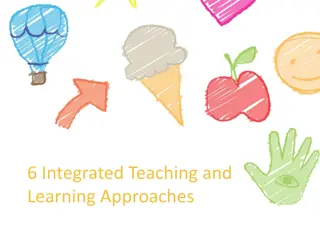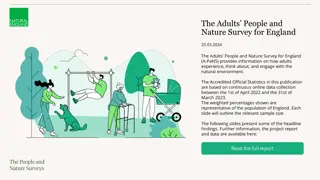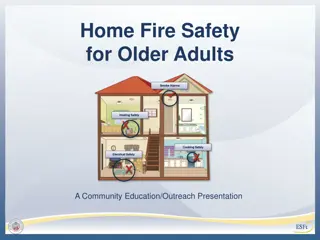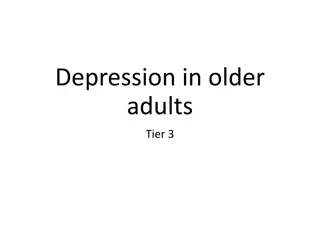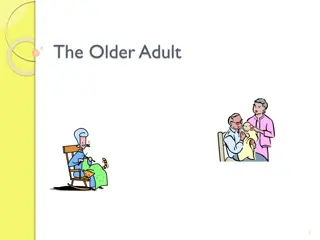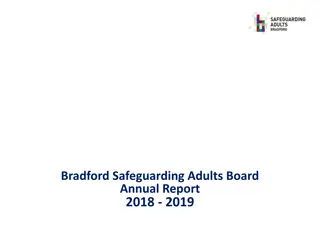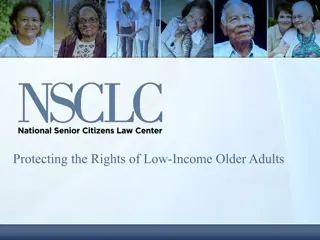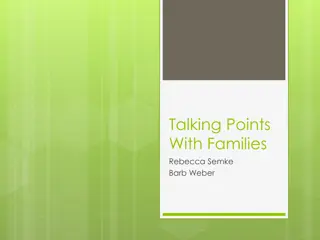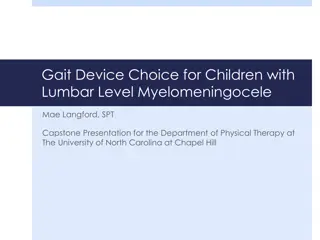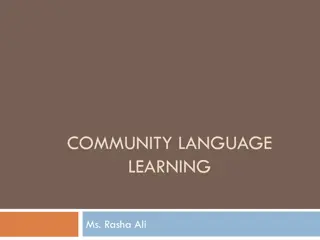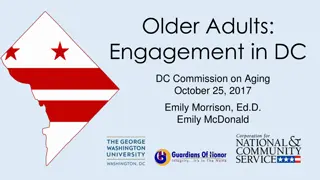Insights into Language Learning: Children vs. Adults
Explore the fascinating process of language acquisition in children and adults, delving into concepts such as Universal Grammar, child utterances, behaviorism, parent feedback, and evidence supporting innate grammar capabilities. Discover how second language acquisition varies based on factors like the Critical Period Hypothesis.
Download Presentation

Please find below an Image/Link to download the presentation.
The content on the website is provided AS IS for your information and personal use only. It may not be sold, licensed, or shared on other websites without obtaining consent from the author. Download presentation by click this link. If you encounter any issues during the download, it is possible that the publisher has removed the file from their server.
E N D
Presentation Transcript
The Nature of Language Learning Unit 1 Lecture
How do children acquire and master language so quickly? What about adults? Do they use the same process or processes?
Universal Grammar Idea proposed by Noam Chomsky Children are born with innate grammar capabilities Narrow down possible grammar rules as they learn a particular language The number of possible language rules is finite Children create unique grammatical utterances that cannot be explained by exposure to the language
Child Utterances Children communicate meaning effectively: Ownership (Dadda s shoes) Events (me fall) Labeling (that dog) Locational Relationships (doll in box) Children show universal patterns in language development Learn word endings more quickly
Behaviorism Idea based on stimulus-response model Imitation is key to language acquisition Can it explain the way children use language? What about ungrammatical utterances? We boughted the cookies
Children Dont Just Imitate Children acquire patterns over time Role of parent feedback: Children ignore corrections Parents rarely correct speech of children Children focus on meaning over form 3-year-old: I clean my room, mommy. Mom: No, I cleaned my room. 3-year-old: Not you, I clean my room.
More Evidence for Universal Grammar Pidgins Created when there is contact between speakers of different languages New language with shared vocabulary and simplified grammar Creoles Form when pidgins become a first language for children A grammar develops and systematic patterns emerge Evidence of innate grammar in children Pidgin + children = creole
Second Language Acquisition Learner variation: factors affecting acquisition Critical Period Hypothesis Idea that there is a critical period for language learning Brain development post-puberty makes language learning more difficult Strong version and weak version Optimal learning period is during childhood
Other Factors Immersion and exposure to target language Example: child in school vs. her mother at home Opportunities to use target language Educational opportunities Higher education Experience in language-learning classrooms
Nativism vs. Social Interactionism Nativists believe: Language ability is innate All humans have cognitive capacity for grammar (universal grammar) Focus on biological aspect of language Social Interactionists believe: Language is learned by interacting with others Both recognize importance of input
Comprehensible Input Meaningful interactions with speakers of the target language Negotiation of meaning Interactional Modifications: Simplifying Paraphrasing Comprehension checks Slowing down Deliberate speech
From Theory to Classroom Many language classes today focus on communicative competence communicative competence Less focus on grammar in the classroom Meaning over form
